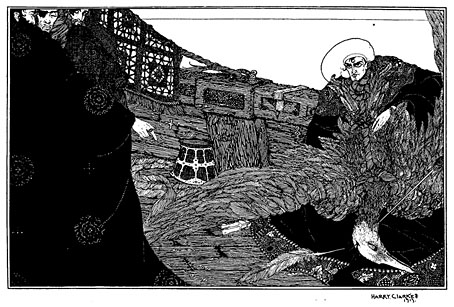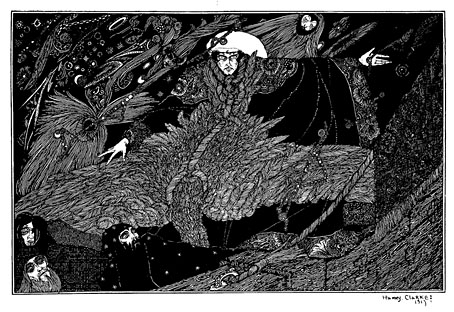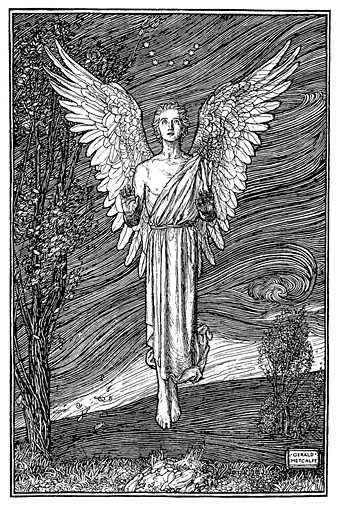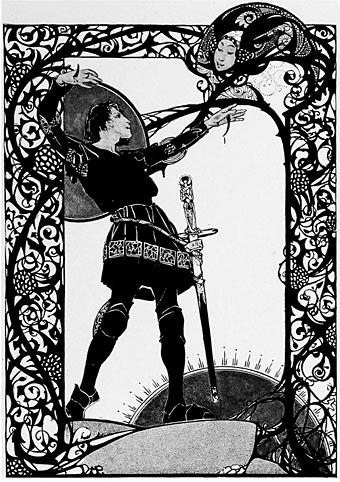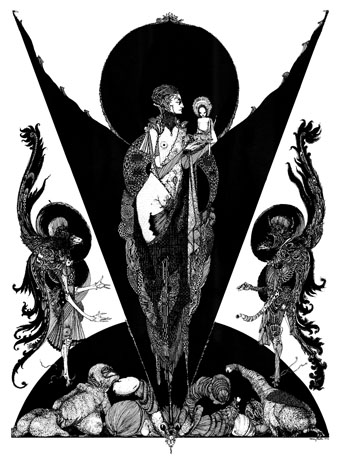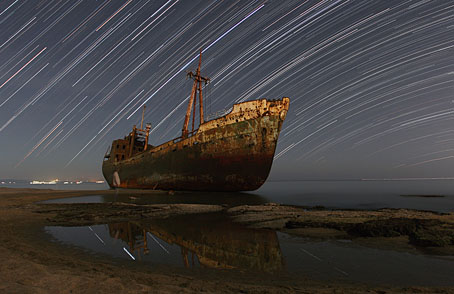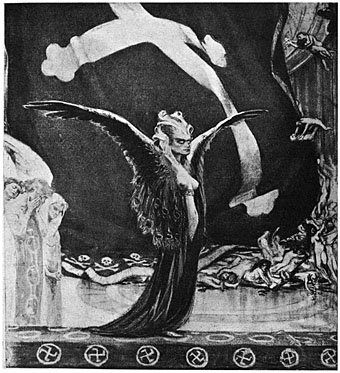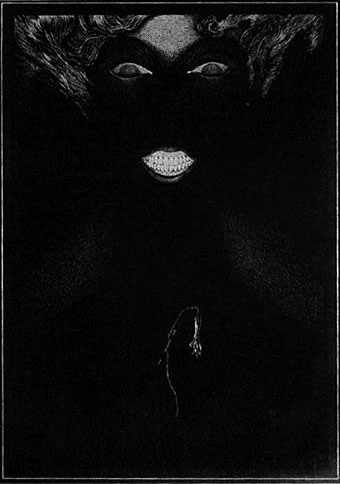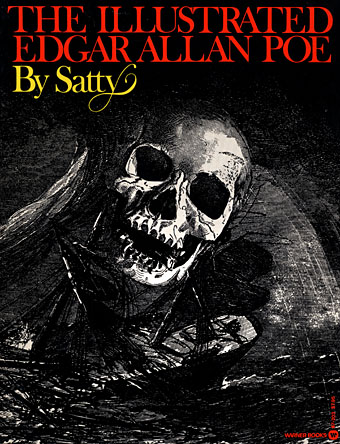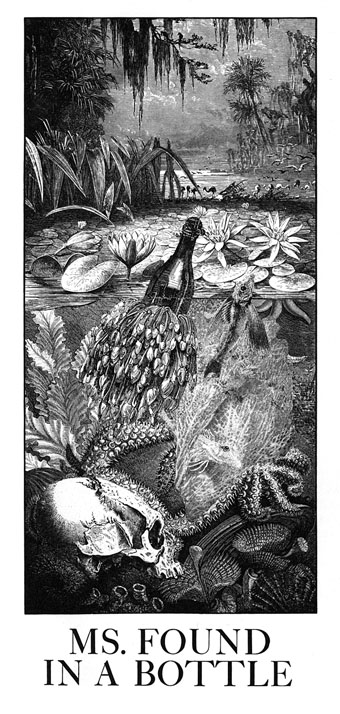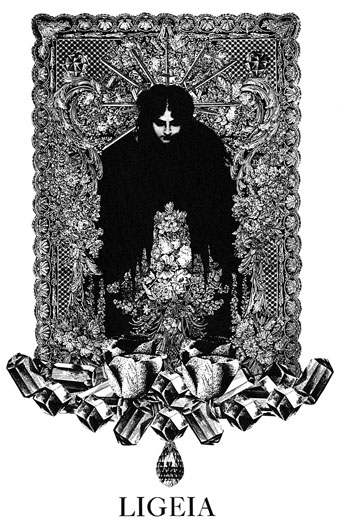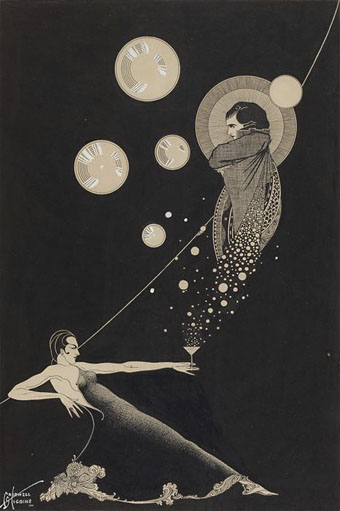
A Delightful Page in the Record of My Existence.
This picture popped up at Chateau Thombeau a few days ago and it’s also been circulating in Tumblr’s recursive labyrinth. The very obvious debt to Harry Clarke’s black-and-white style caught my attention, especially to the artist’s Poe illustrations with the reclining woman being a blatant swipe from one of the Pit and the Pendulum drawings.

The Pit and the Pendulum (1919) by Harry Clarke.
Searching around revealed that the artist responsible, Cardwell Higgins, produced a small series of similar pieces in the late 1920s. He then settled into a career as an illustrator for American magazines and advertising, working in a far more commercial style which isn’t really the kind of thing I get very excited over. Six drawings from the black-and-white series were published as a lthograph set in 1979. Some of the originals came up for sale recently which accounts for the surfacing of these copies.

